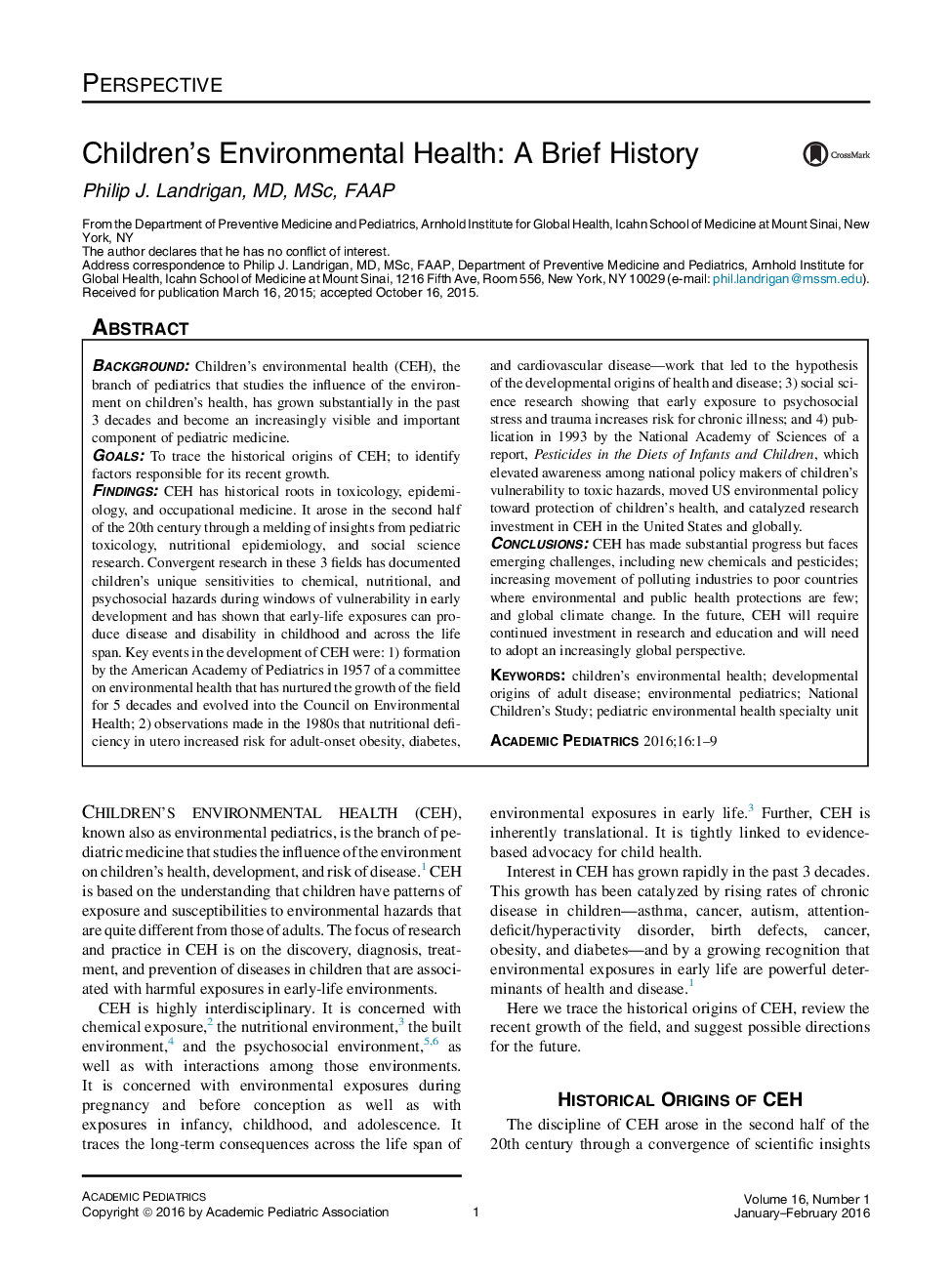| Article ID | Journal | Published Year | Pages | File Type |
|---|---|---|---|---|
| 4138976 | Academic Pediatrics | 2016 | 9 Pages |
BackgroundChildren's environmental health (CEH), the branch of pediatrics that studies the influence of the environment on children's health, has grown substantially in the past 3 decades and become an increasingly visible and important component of pediatric medicine.GoalsTo trace the historical origins of CEH; to identify factors responsible for its recent growth.FindingsCEH has historical roots in toxicology, epidemiology, and occupational medicine. It arose in the second half of the 20th century through a melding of insights from pediatric toxicology, nutritional epidemiology, and social science research. Convergent research in these 3 fields has documented children's unique sensitivities to chemical, nutritional, and psychosocial hazards during windows of vulnerability in early development and has shown that early-life exposures can produce disease and disability in childhood and across the life span. Key events in the development of CEH were: 1) formation by the American Academy of Pediatrics in 1957 of a committee on environmental health that has nurtured the growth of the field for 5 decades and evolved into the Council on Environmental Health; 2) observations made in the 1980s that nutritional deficiency in utero increased risk for adult-onset obesity, diabetes, and cardiovascular disease—work that led to the hypothesis of the developmental origins of health and disease; 3) social science research showing that early exposure to psychosocial stress and trauma increases risk for chronic illness; and 4) publication in 1993 by the National Academy of Sciences of a report, Pesticides in the Diets of Infants and Children, which elevated awareness among national policy makers of children's vulnerability to toxic hazards, moved US environmental policy toward protection of children's health, and catalyzed research investment in CEH in the United States and globally.ConclusionsCEH has made substantial progress but faces emerging challenges, including new chemicals and pesticides; increasing movement of polluting industries to poor countries where environmental and public health protections are few; and global climate change. In the future, CEH will require continued investment in research and education and will need to adopt an increasingly global perspective.
